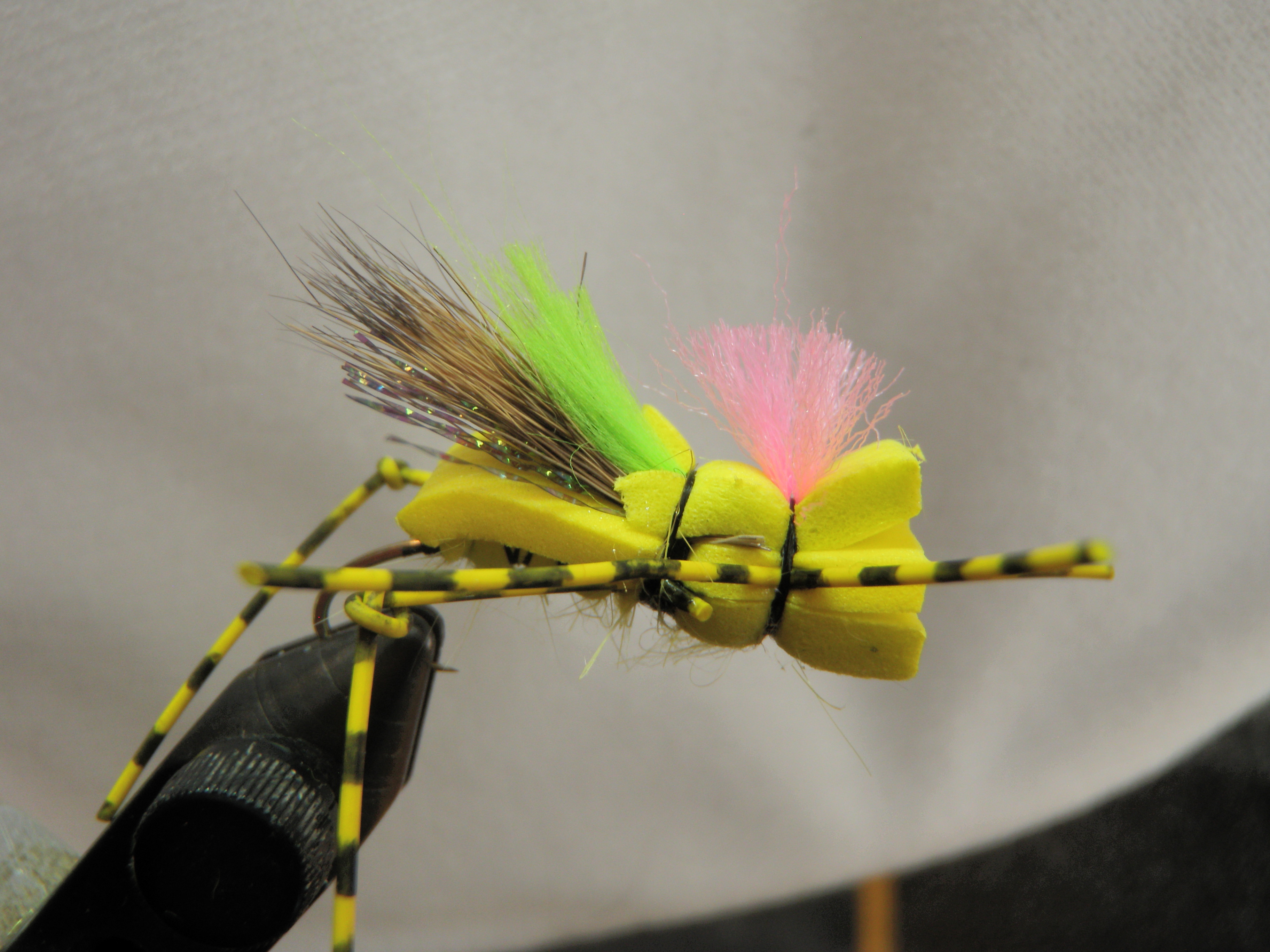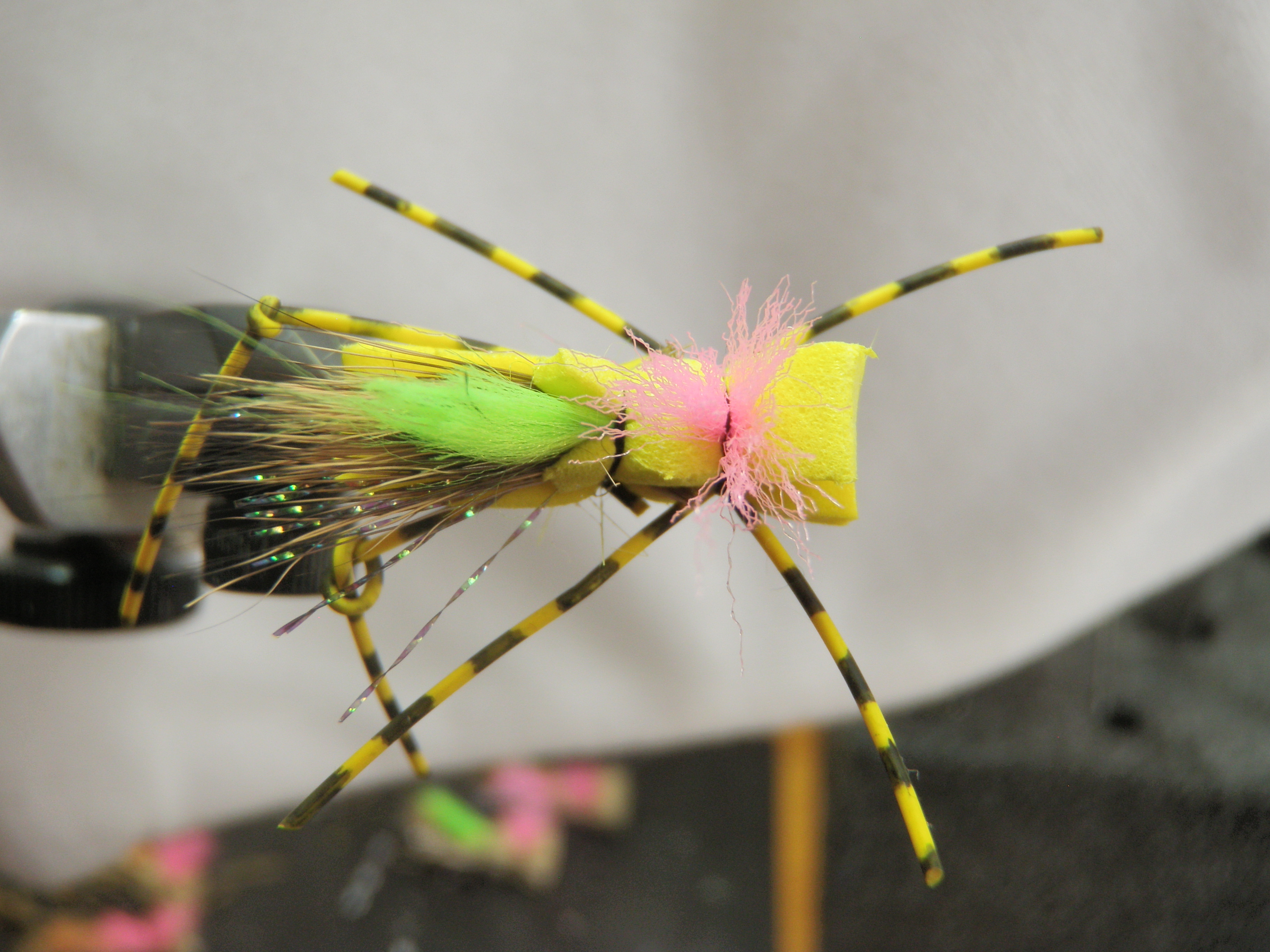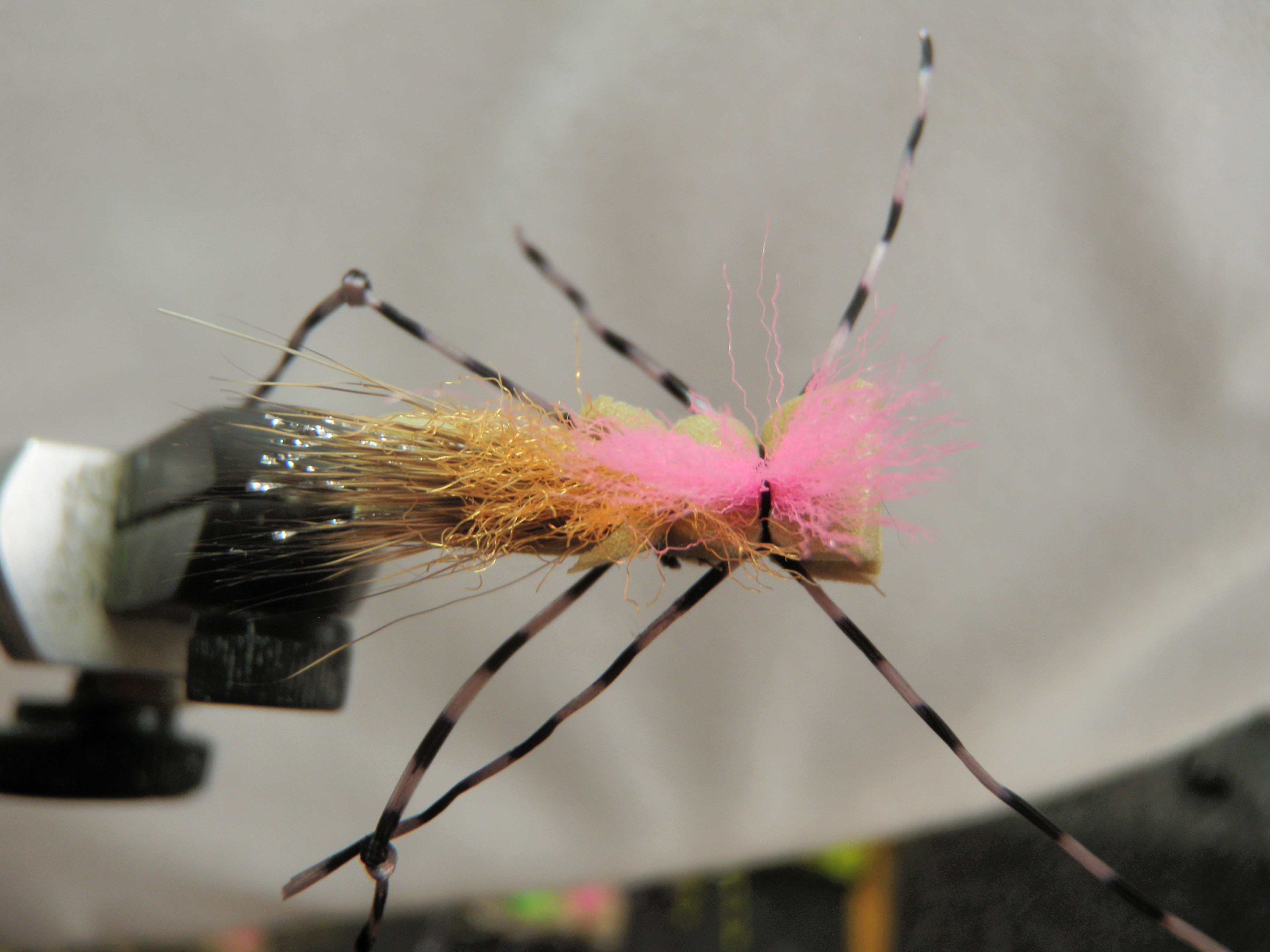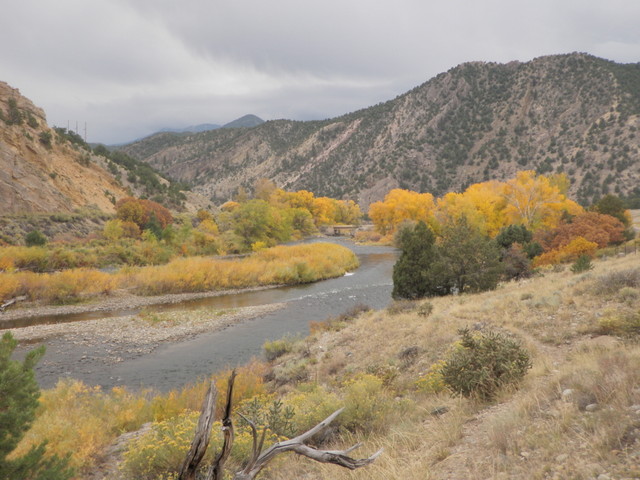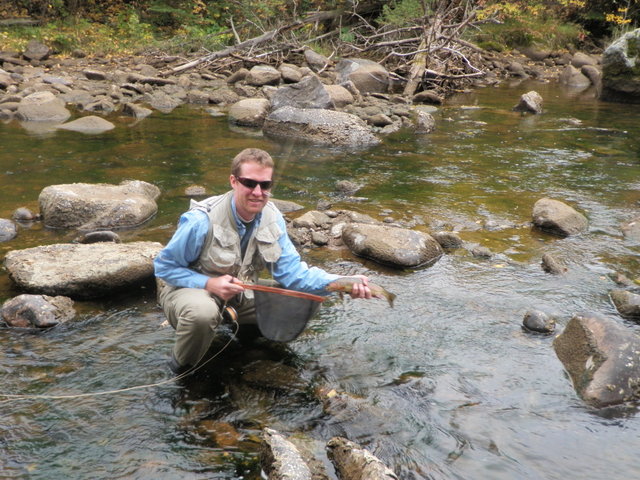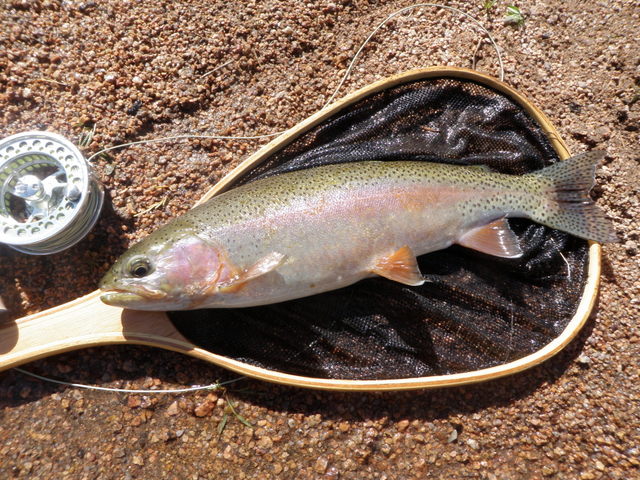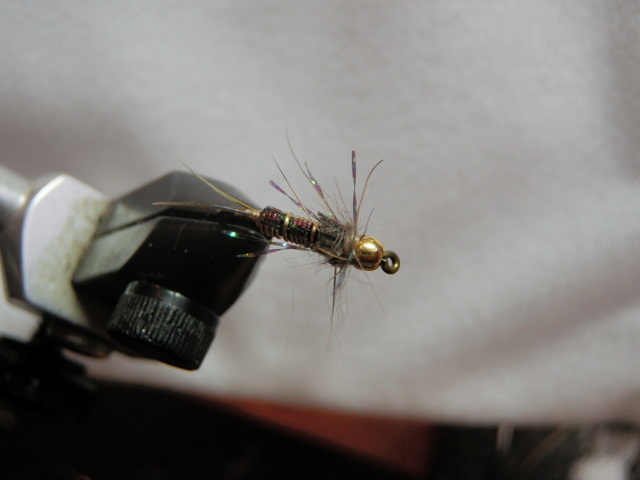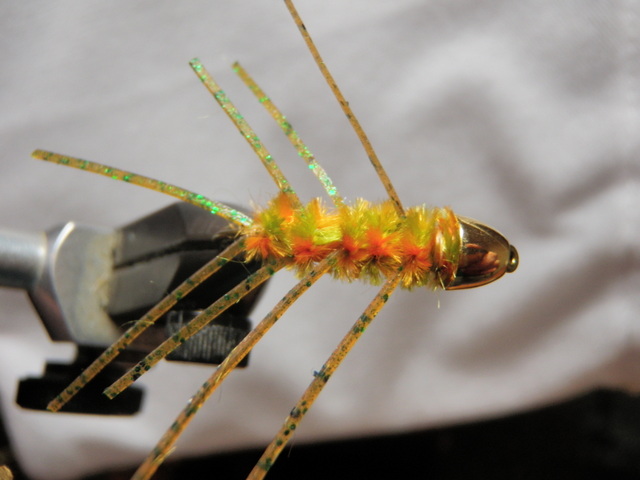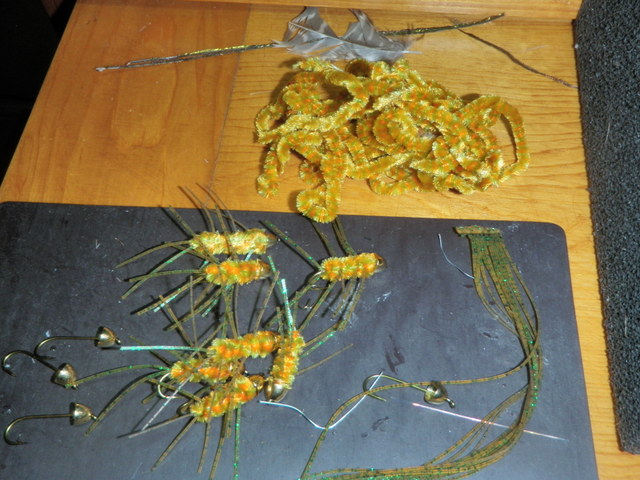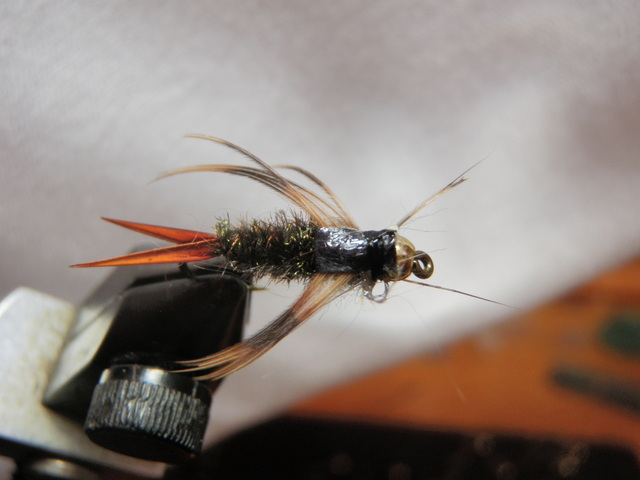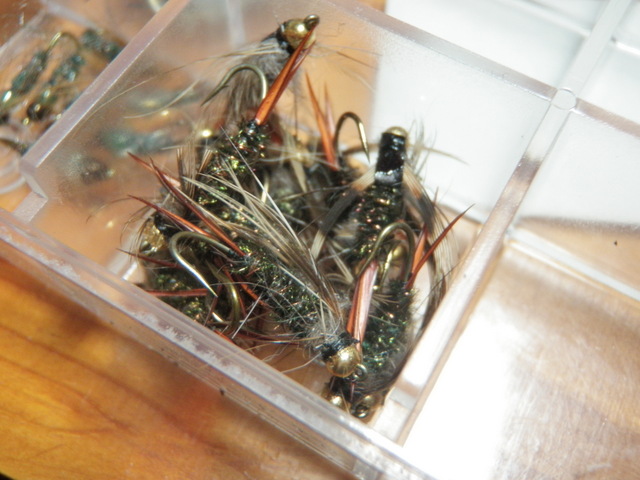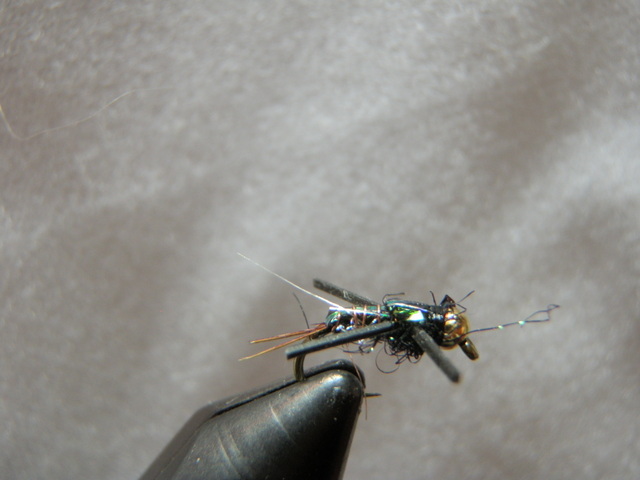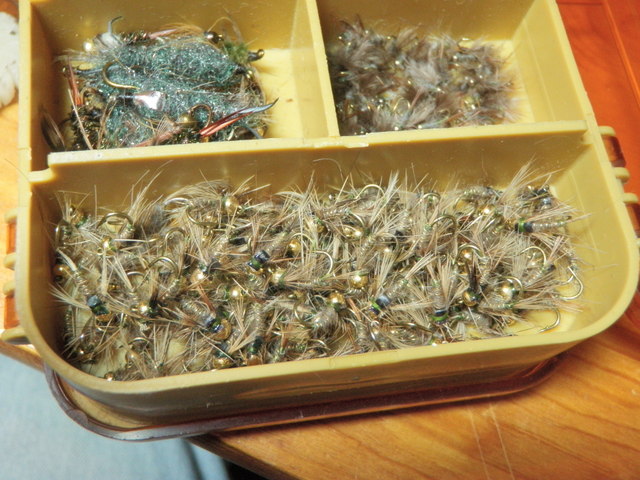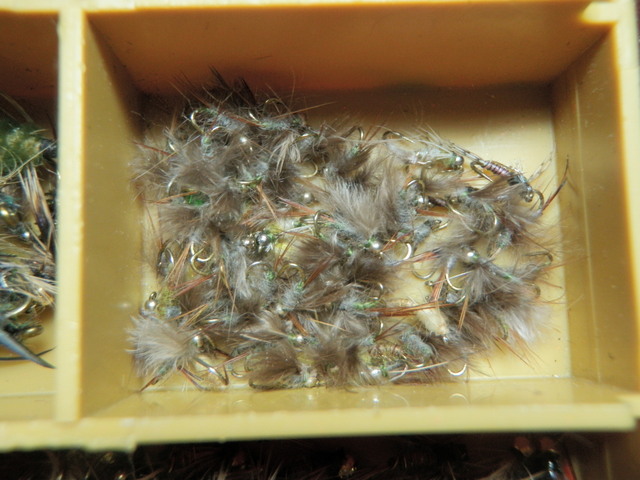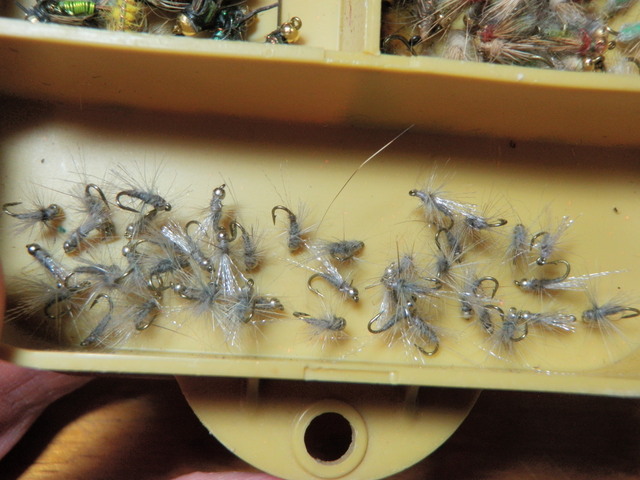While on a day of guided fishing with Taylor Edrington of Royal Gorge Anglers I asked him what his favorite hopper imitation was. Without hesitation Taylor replied with Pool Toy, and given Taylor’s experience guiding and fishing all around the world and his many hours guiding on the Arkansas River, I made a mental note to tie some. I searched YouTube and the internet for tying instructions, but could not find any. I found some photos on the web pages of online fly merchants, and read about the originator, Andrew Grillos, a native of Colorado.
I continue to search for a productive buoyant foam hopper pattern that will be highly visible and float like a cork while suspending size 14 beadhead nymph patterns. I wasn’t totally satisfied with the Charlie Boy Hopper, so I’m hoping the pool toy may be the answer.
Fortunately a recent article in Southwest Fly Fishing featured step by step instructions for producing a Grillos Pool Toy so I made a copy and studied it. I reviewed the material list and determined I had everything but a material to make pink indicators, so I decided to forge ahead and substitute a bright neon green material left over from a project completed over the holidays by my son and daughter. My first two prototypes were encouraging, but I struggled with what type of rubber leg to use and how to attach the rear legs and what color dubbing to use as a base under the first layer of foam.
I decided to call Taylor and get his input. Taylor told me he didn’t use dubbing as it absorbs water and instead used a type of floss thread to create a base on the hook. In addition he said he used colors that match the first layer of foam, but indicated this isn’t necessary, and he frequently departs from this convention with attractor materials. As to the legs he advised Sexi legs as the material that he prefers. The material I used on my first couple prototypes was yellow barred Centipede legs. I love their look and rigidity, but the knots on the hind legs have a tendency to unravel and not hold. It was around this time that I discovered Andrew Grillos’ web site and sent him a quick email asking for his advice on the rubber/silicone legs.
Andrew suggested the Centipede legs and recommended pulling the knot tight almost to the point of breaking. He suggested applying Zap a Gap or some form of quick drying adhesive to the knot as well and recommended coating the thread wraps where the legs are attached with head cement for additional durability.
I ended up making a trip to Charlie’s Fly Box during a lunch break and found Sexi Legs along with a bright pink fiber that would be ideal as a strike indicator for the front section of the fly. I’ve now completed eleven Grillos pool toys using both Centipede legs and Sexi legs. Eight of the hoppers are tan and three are yellow, and I plan to manufacture three more pink versions which Taylor swears are very effective. I’m very pleased with the look of these flies and I am very anxious to toss on a stream to test their buoyancy.

